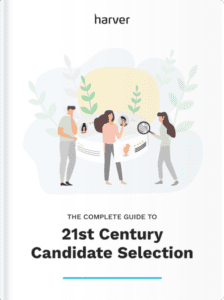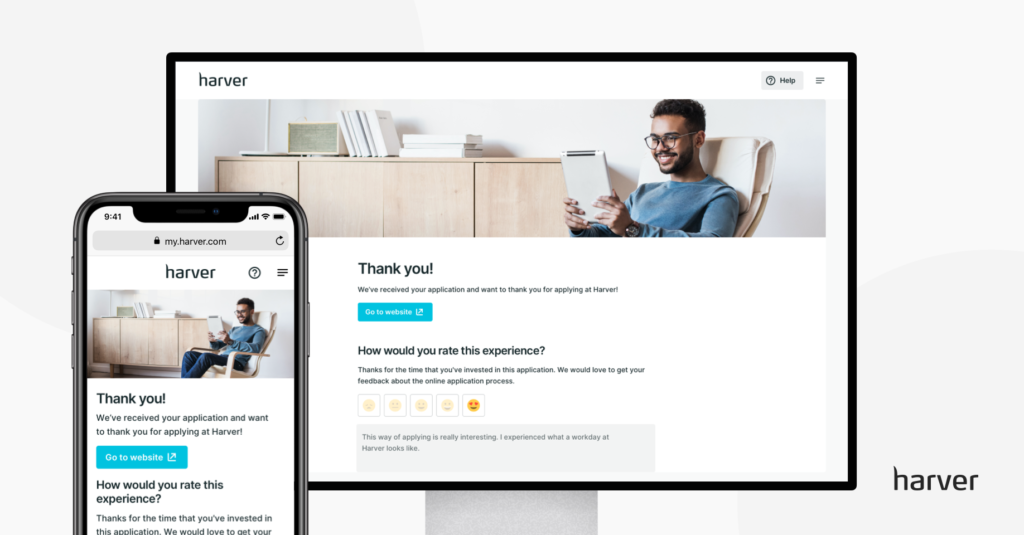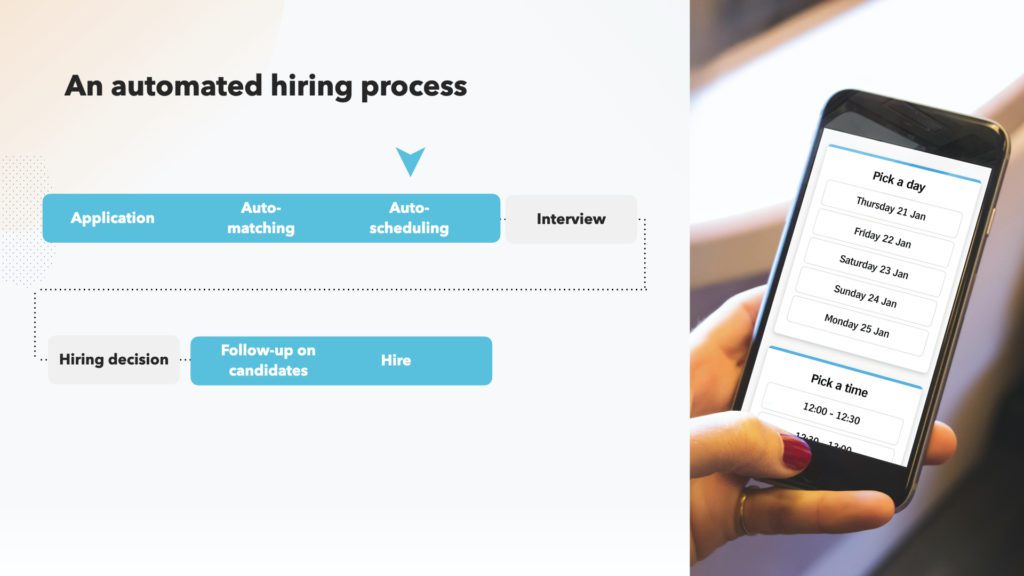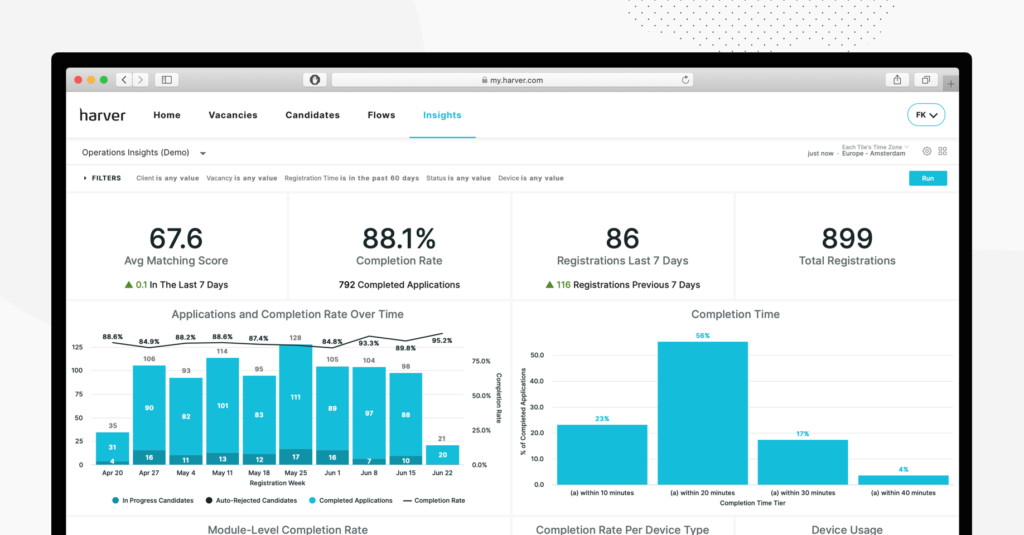Many of the customers who approach Harver searching for a better solution to high volume candidate selection have the preconceived notion that candidate drop-offs are bad.
In this article, we’re not only going to bust this myth – because candidate drop-offs aren’t always bad – but also explain how you can build a high-volume recruitment process that gives you healthy drop-off rates.
Let’s dive into it!
What's in?
Like what you see?
Don’t miss out. Subscribe to our quarterly digest to get the latest TA and TM resources delivered right to your inbox.
Healthy vs. unhealthy candidate drop-off rates
In the volume hiring space, many recruiters are used to the traditional recruitment process and are reluctant to build a selection process that encourages candidate drop-offs and filters applicants out.
They labor under the myth that they shouldn’t discount any applicant without reviewing them, but this backfires quickly and they end up recruiting for the same roles over and over again, as a result of ill-fitting candidates and high rates of early attrition.
At Harver, we treat each customer as an individual, looking at the reality of their workforce and at the market situation, and decide from there if they should aim for a more selective hiring process, or if they should try to capture everyone.
Your recruitment process is uniquely yours and there is no one size fits all solution. A healthy drop-off rate for one organization might be an unhealthy drop-off rate for another. Not to mention your recruitment strategy and acceptable drop-off rates will vary depending on the labor market at the time you’re recruiting, and the number of seats you need to fill.
Stop guessing,
Start data-driven hiring.
Learn how you implement a modern candidate selection process, that is: streamlined, experience-driven and backed by data.

Recruitment strategy for tight labor markets
In tight labor markets, the best recruitment strategy will be to source as many candidates as possible, because there’s not many to choose from, and you want to give yourself the best selection you can, given the circumstances.
So the first thing to fix is your sourcing strategy. If you’re not getting enough applicants, tap into underutilized talent pools. For example, applicants who want more flexible arrangements and can’t work 40 hours per week, veterans, military spouses who can’t remain in one location, people who have been incarcerated and are returning to society.
Try channels such as Facebook or go offline and make it easy for candidates to apply through QR codes, if you’re looking to recruit Gen X candidates or even Millenials. Promote your vacancies in dedicated groups and communities, such as work-from-home or freelance communities. Get creative and advertise on Instagram if you want to attract Gen Z candidates.
Your application process should be designed to be as short and fast as possible to reduce the number of candidate drop-offs, and to give applicants job security quickly, ensuring a short time to commitment.
Also, our recommendation is to recruit continuously instead of taking your job postings down, even if your open roles have been already filled.
We’ll discuss our approach to designing an effective volume hiring process below, but in general, we see that our customers who keep their vacancies open and use the right sequence of pre-employment assessments are able to build talent pipelines of suitable candidates relatively quickly.
Hiring approach for a slack labor market
In a slack labor market where you’re likely to receive a high volume of applicants, the best approach is to filter out candidates who aren’t a good fit early. In general, you don’t want to hire:
- Applicants who don’t have the right skills and characteristics to carry out the role,
- Candidates who don’t understand the role correctly, and are therefore more likely to quit soon after starting,
- People who don’t fit your culture.
Pre-employment assessments such as personality questionnaires, cultural fit assessments, and realistic job previews in the form of situational judgment tests can ensure that you’re selecting the right people for your open roles.
Weed out unsuitable candidates by making your application longer, adding more assessments, or increasing the level of commitment required from applicants, if you want to get the best of the best candidates.
How to structure your volume hiring process
Whether you’re recruiting in a tight labor market or a slack labor market, you want to structure the recruitment process so that it delivers the right number of quality applicants to fill your open roles.
There are a number of things you can do to achieve this:
1. Analyze your current drop-off points
Look at your drop-off rate – on average, 73% of candidates abandon an application if the process takes too long, and 49% of candidates would consider applying for a role instantly if the process appeared simple.
- If the drop-off rate is good, meaning that it helps you get more qualified or better fitted candidates, keep your process as it is.
- If the drop-off rate is bad, meaning that you don’t get quality hires, or people attrit soon after joining, or you get too few candidates, you need to adjust the process.
You also need to know where your drop-offs are happening, and why. The best way to get clarity here is to map the applicant journey across channels and identify the touchpoints where there is more friction.

You can shed applicants at any stage of your application process: from the first time they land on your career page, to not accepting your job offer. It’s vital to figure out what the root of the problem is in order to help you decide if you need to do something about it.
The top reasons candidates drop off include:
- Confusing job application
- Lengthy hiring process
- Poor candidate experience
- Poor interview experience
- Lack of communication
The best way to understand why people don’t finalize the application is to collect candidate feedback throughout the selection process. Make this a standard part of your application flow.

2. Review your candidate selection process
What sequence of assessments are you using?
Take a look at your industry – what kind of people does it need with what sort of skill set? Do you need analytical thinkers? Problem solvers? Multitaskers able to operate under pressure? Team players? Customer-oriented people?
You can assess applicants for almost every skill or trait you’re looking for with pre-employment tests. While assessing applicants is a good idea to thin out unsuitable candidates, you don’t want to veer too far in the opposite direction and overwhelm candidates with an array of unnecessary assessments.
For example, if you’re hiring QSR employees to fill low complexity, entry-level roles, do you really need aptitude tests?
When selecting pre-employment assessments, ask yourself if they’re relevant for the job family you’re hiring for. At Harver, our team of I/O psychologists is involved early in the solution design process and carries out a job task analysis that helps them understand what the role entails and what employees need to succeed in it.
Based on these findings, they start defining selection criteria and drafting the sequence of assessments that’s the most likely to help a company identify the right people, with the right skill set and attitude.
How long does the process take?
How long is your actual timeline? Have you communicated that clearly to applicants?
Job seekers who apply for low-complexity, entry-level roles are typically looking for a quick fix to their employment situation, they have a sense of urgency that you might not share. But that doesn’t mean you can leave them in the dark, unsure of when they’ll next hear from you or what your next steps are.
Keep candidates engaged by outlining your anticipated timeline from the outset, giving all applicants a rough idea of when applications close, when you’ll be calling people forward for an interview, and when you hope to fill the positions.
Or even better, automate your hiring process and allow candidates who pass your selection criteria to self-schedule interviews immediately after they finish the assessments and receive their candidate score.

By doing so, you not only shorten your time to commitment and time to hire, but you also increase the efficiency of your high-volume recruitment process.
What’s the candidate experience like?
Anything you can do that will allow your organization to stand out from the competition, particularly in a tight labor market, will give you the edge, and hopefully attract the top talent.
This job application flow from Albert Heijn is a great example of a candidate experience that is engaging, short, fully digital and gives applicants enough information to manage their expectations from the outset.
Ready to transform your hiring process?
We’ve found interactive situational judgment tests (SJTs) are a great differentiator too. They’re not only beneficial for recruiters, providing you with insightful data that you need to make fact-driven hiring decisions, they’re also fun for candidates to undergo, feeding into an outstanding candidate experience.
SJTs allow you to assess applicants on a wide range of applicable skills, and you can tailor-make your assessments to fit your specific hiring requirements, allowing you to accurately assess candidates, scoring them against your company benchmarks.
Have someone from your organization run through the entire application process to spot bottlenecks in the application flow that will likely frustrate applicants, reduce candidate experience and increase drop-off rates.
3. Design an agile hiring process
Once you’ve figured out what is causing your drop-offs, you can decide what strategy to adopt going forward and how to design your recruitment process for healthy abandonment rates.
If more candidates drop off towards the end of the application than the beginning, your application process might be too long and you might need to shorten it.
If candidates drop off at the beginning before they’ve even begun applying, or shortly after starting the application, assess the overall candidate experience and create a better one.
Take inspiration from McDonald’s candidate experience – regardless of where applicants are sourced from, there is only one entry point for all candidates, and applicants can apply directly for a job from their mobile phone for multiple locations at once.
During the application, they get a realistic job preview with a ‘day in the life’ video where they learn about the job and the different roles at McDonald’s, and they are assessed straight away too. Finally, all candidates can provide feedback about their application experience there and then.
If candidates drop off during your information gathering stage, skip the resume and cover letter and combine asking for their details with presenting your company through employer videos to make the application experience more entertaining and engaging.
If candidates drop off during assessments, consider using more entertaining formats, such as SJTs or virtual job tryouts. Or if you have multiple assessments, thin them out to just the bare essentials.
At Harver, we help our customers build modularity into their recruitment process to make it easy to scale hiring operations at the click of a button if the labor market changes.
If you’d like to see how Haver can transform your hiring process,
book a demo here!
4. Track and gather all applicant data
To get a clear picture of your recruitment process, you have to track and gather all applicant data in order to act in a data-driven manner going forward.
This means tracking applicant data from the very start of their search with you: from application conversion rates, through every stage of your recruitment process, so you can learn from past mistakes and optimize your recruitment process going forward.
For example:
- How many applicants saw your career site but didn’t view the job description?
- How many read the job description but didn’t apply?
- How many submitted the application but ghosted you afterwards?
- How many started your assessments but dropped off?
- How many scheduled an interview but failed to show?
- What are candidates saying about you – all candidates, not just the successful ones?
This is crucial information you need to be tracking. Where applicants are dropping off should help you understand better the reasons why.
Inside the Harver platform, customers have access to a series of recruitment dashboards that display key performance indicators, as well as to candidate profile data, for fast, fair, and data-driven hiring decisions.

Next steps
When you’re looking to structure your recruitment process for healthy candidate drop-off rates, the key takeaway is that you need a solution that is right for your organization, the labor market you’re recruiting in, and that is future proof.
You might want a lower your attrition rates, or build a more efficient process, or improve your data collection while ensuring you’re attracting the right number and the right type of candidates for your open roles. Regardless of the problem that you’re trying to fix, our recommendation is to take a more holistic approach instead of focusing on candidate drop-off rates only.
At Harver, we don’t design hiring processes to meet just one KPI. Instead, we take a holistic approach to volume hiring, to make sure that all the pieces of your recruitment puzzle work together and support your business objectives.
Ready to transform your hiring process?


